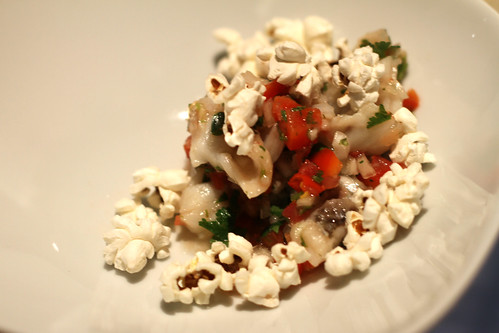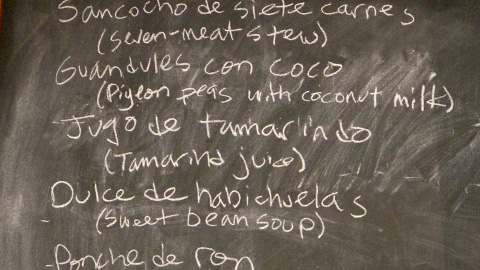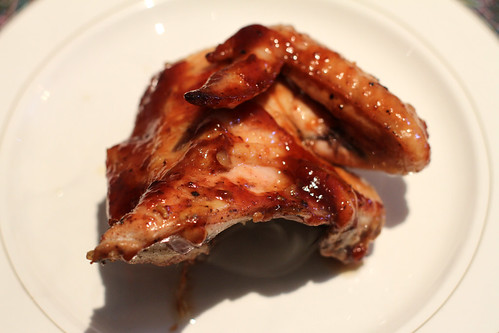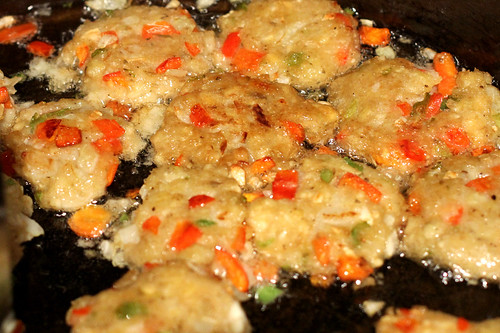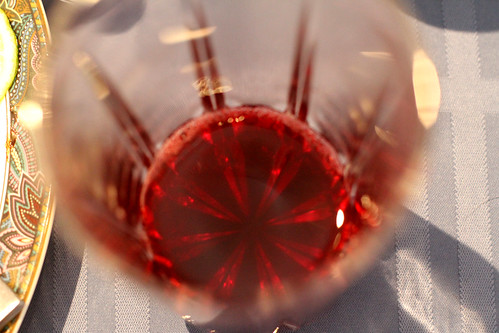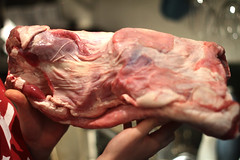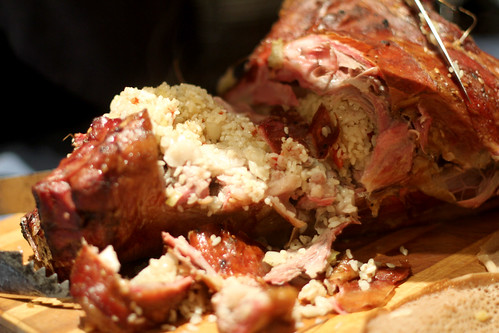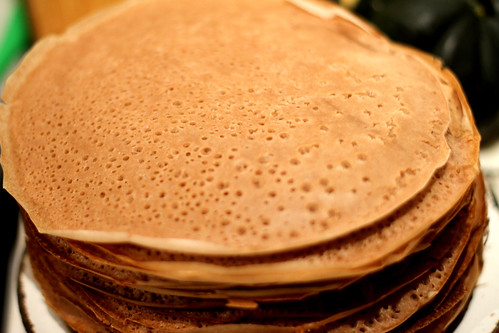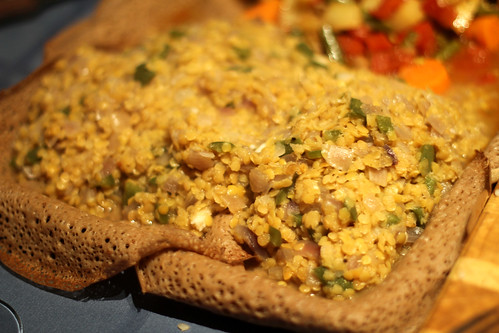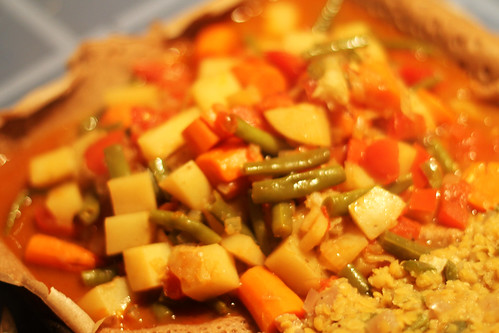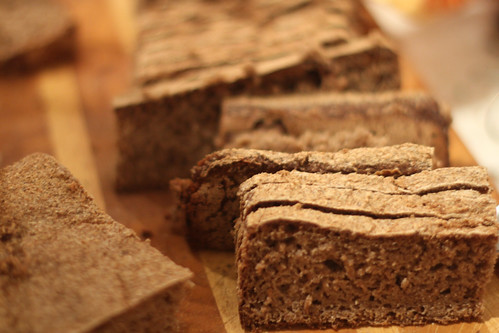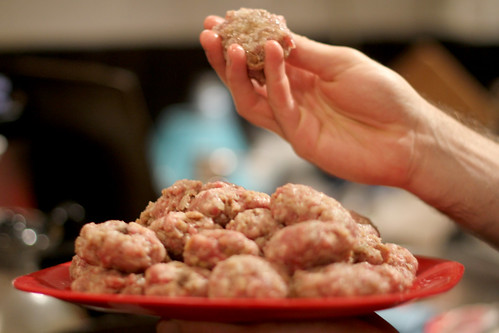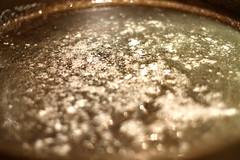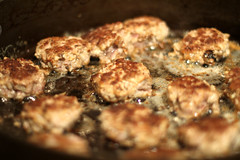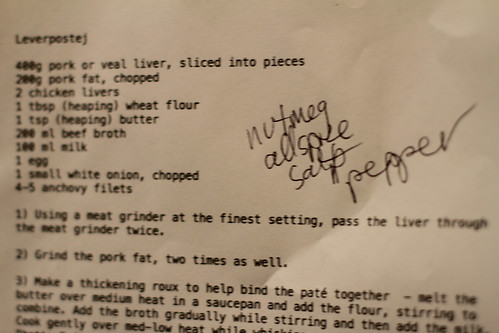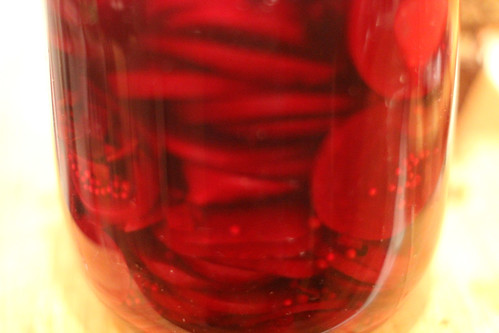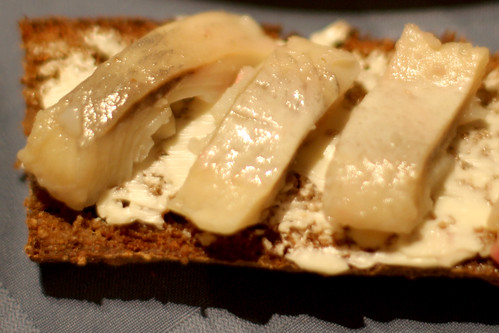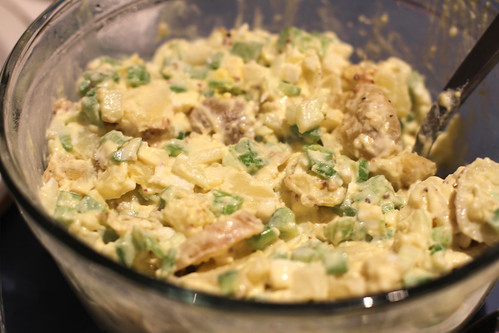 Ecuador is kind of on the small side — a bit larger than the UK, a bit smaller than Nevada — but its borders contain three distinct zones: seaside, Andes, and Amazon. Hence, there's quite a lot of variety in the foods available. (There's also Galápagos way out in the Pacific, but we're not eating any of their rare wildlife.)
Ecuador is kind of on the small side — a bit larger than the UK, a bit smaller than Nevada — but its borders contain three distinct zones: seaside, Andes, and Amazon. Hence, there's quite a lot of variety in the foods available. (There's also Galápagos way out in the Pacific, but we're not eating any of their rare wildlife.)
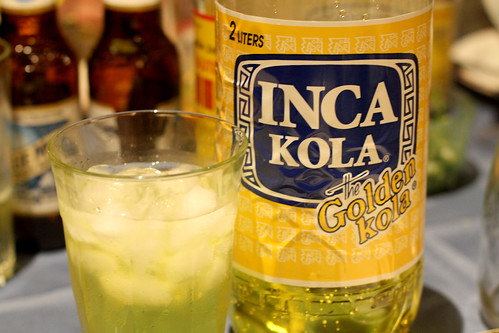
Some of the major themes are shared with its Andean neighbors: abundant potatoes, warming foods, and the ubiquitous Inca Kola, which tastes like bubble gum and packs a caffeinated punch. (Spike it with Pisco like we did!) I was surprised to see a lot of annatto, aka achiote, a seed that gushes a saffron-like orange hue when heated in oil. Pretty much everything we had was that color.

Our guests were Kelly, Sarah-Doe, Jon (who just flew in from California and came straight from the airport), Tennessee, Jen, and Kathryn, who's half-Ecuadorian and helped with the menu and prep!
Ceviche de pescado | Fish ceviche | Recipe
Ceviche is surely the most famous seafood dish of South America, and the Ecuadorian version does it great justice. I especially like it because of just how lime-y it is: you first "cook" the fish in one batch of fresh lime juice, then rinse it off and make a second marinade with yet more. That makes it so the marinade has a good but not overpowering fishy flavor. But the craziest part of the Ecuadorian ceviche is that it is commonly eaten with...popcorn! It sounds crazy but makes total sense: the dry puffs with their slightly sweet and nutty flavor provide the perfect foil for the wet, tangy, and fishy flavor of the ceviche.
As far as making the ceviche itself, it's extremely important to start with the freshest fish possible. So I went to Sunset Park's Chinatown and got a live tilapia and a live striped bass. Even though they came to four pounds at the store, once I filleted them (thanks, Knife Skills 201 class!), I had only a pound of flesh left even though the recipe calls for two. I kept going with the full recipe and am glad I did: while it wasn't exactly overflowing with fish, there were plenty of tasty morsels amongst the other bits. (For what it's worth, I couldn't tell the difference between bites of the two fish so you might as well go with the cheaper one.) And, of course, the popcorn helped it all go farther! A single recipe with half the fish provided enough for an appetizer for 8.
Aji criollo | Rustic hot salsa | Recipe
The recipe calls this a hot sauce but it's really more like a Mexican salsa — it doesn't have tomatoes or limes, just chilies, scallions, and cilantro, but it is veggie-rich and is more to be scooped on than applied in dabs.
Locro de papa | Potato and cheese soup | Recipe

I love spices, the way that complex combinations of flavors build together and take over your senses. But sometimes it's just better to cook simply and carefully, letting the inherent characters of the ingredients shine through. This soup, made of little more than onions, potatoes, cheese, cilantro, and a splash of milk is a wonderful reminder of the value and delight of basic ingredients. Though I gotta say the zip and zing from the aji goes well too!
Llapingachos con salsa de maní | Potato-cheese fritters with peanut sauce | Recipe
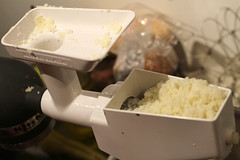
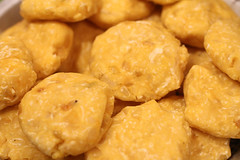
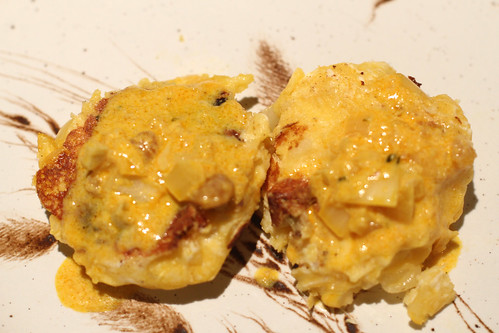
This recipe has almost the same ingredients as above — pretty much the only addition is peanuts for the sauce — but it's amazing what a different dish it turns out to be. Now, I way overcomplicated this one, by using a food strainer attachment for the Kitchen-Aid (score from raiding my parents' basement over Thanksgiving! I also got a meat grinder and a shredder!!) to rice the potatoes, but wow the texture turned out all lovely and fluffy. Note that you want your batter cold and your griddle very hot and sufficiently oiled to make sure the crispy part stays on the potato rather than the griddle.
Not kidding that when I asked Kathryn what to serve with these, she suggested potatoes. (Yes, she knows that's funny.) Also, apparently in her family they just call these tortillas. I did fry up a few chorizos for the meat-eaters, which were surprisingly tasty. (Got them at La Vaquita on 5th Ave in Sunset Park, for the curious.)
Empanada de queso | Cheese and scallion empanada | Recipe

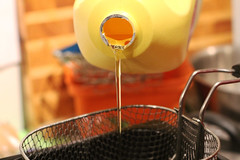
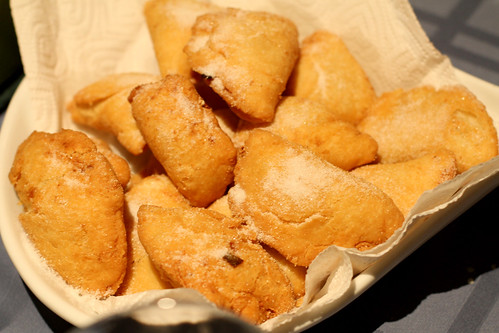
We've had some odd ingredients in our Nosh desserts — cornstarch pudding for Afghanistan, lard in the Chilean pastry, even that sweetened and chilled kidney bean soup for Dominican Republic — but it took until the E's to have onions! These empanadas, for which Kathryn channeled her grandmother to roll, stuff, and deep-fry, are filled mostly with cheese but with just enough scallion to give that fresh sharpness. The rustic dusting of granulated sugar leaves no doubt that this is a dessert, and the hot, crispy dough sure contributed to the feeling, but that scallion, well, it's a touch of daring genius.
Canelazo | Spiced, spiked punch | Recipe
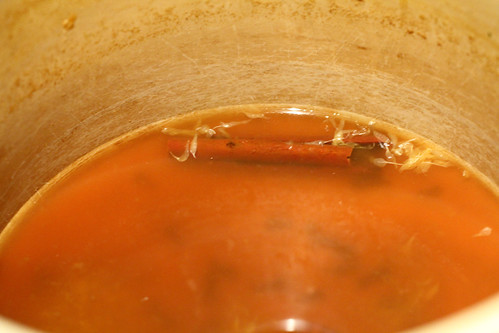
What a tasty, and therefore dangerous, number! Nothing more than a few spices and juices, it's really simple to make (though of course I overcomplicated things a bit with fresh-squeezing the orange juice), and so warming and tasty. Very luckily I was able to find Ecuadorian aguardiente. Unlike its anise-flavored and better-known Colombian cousin, it tastes pure as a rich, unfiltered sugarcane, kind of the brown-sugar sibling of cachaça. And it is definitely much more smooth and agreeable than the over-the-top website of its manufacturer.
This meal was also the start of a new tradition, streaming radio from the country! JC Radio La Bruja from Quito had quite the Saturday night mix going.
Next meal takes us back to the Middle East, with Egypt!
